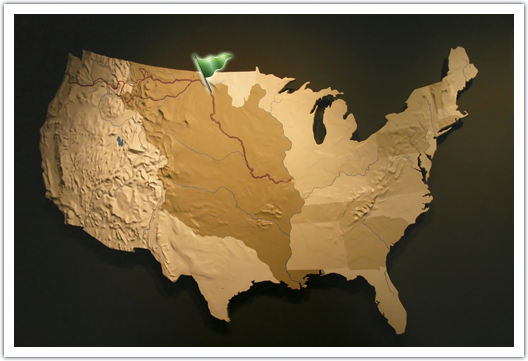David Thompson made his second visit to the Mandan Villages in 1797 and observed many of their ritual dances, such as the Bison dance depicted in this drawing by Karl Bodmer, in 1837. (Library of Congress)

David Thompson, now working for the
North West Company, stayed with the village Indians for about two
weeks in the winter of 1797-98. Thompson was accompanied by
Rene Jusseaume, Hugh McCracken, and seven French Canadian
traders. Their Assiniboins guides tried to get Thompson to
turn back during bitterly cold weather by telling him stories of
marauding Sioux, but the Canadian was undaunted and saw through
their chicanery. He pressed on through deep snow and bitter
cold and nearly led his party to perish.
Thompson's visit to the Mandan
Villages marks the end of an era, though neither he nor the Indians
knew it at the time. As late as 1797, sixty years after
LaVerendrye's first contact, these tribes were still living in
their natural state. Although they had hosted more than two dozen
European trading parties by this time, they were mosty unaffected
in any material way by the European traders. Also, Spanish
trade, once regular visitors to the Mandan Villages, were losing
ground to the French and British.
The arrival of Lewis and
Clark, in October 1804, would change their world forever.
Henceforth, the Mandans would increasingly fall under the sphere of
influence of the white world, and their remarkable thousand year
history on the upper Missouri would quickly be reduced to a
footnote in the larger story of European expansion across the North
American continent.
While Sieur de
la Verendrye was the only educated European to see the Mandans at
the height of their material and political glory, David Thompson
was probably the last to see them before they lost whatever glory
was left after small pox decimated their numbers, and before the
arrival of Lewis and Clark.